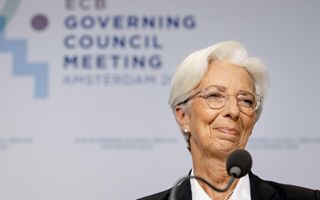(Finance) – The ECB did not disappoint the market’s expectationsannouncing a interest rate cut by 25 basis points at 4.25%, but the decision between the members of the Board of Directors it was not unanimousin particular the Governor of the Austrian Central Bank Robert Holzmann voted against, and the President Christine Lagarde he admitted that there will be a “bumpy ride” and inflation will be a little higher than evidenced in recent months.
A painting of lights and shadowswhich was greeted with great euphoria from the markets, with the FTSE MIB index closing up by 0.95%, while Frankfurt and Paris brought home smaller gains of 0.4%. But what do analysts think?
“With one move essentially already announcedthe ECB cut the reference rates for the first time in 5 years, and it is worth highlighting the fact that it acted in advance of possible rate cuts by the US Federal Reserve”, comment the analysts of Mirabaud AM, specifying that “this cut can be defined as ‘hawkish’as no clear indications on future actions have been provided” and therefore it is expected that “the European monetary authorities will carry out two more cuts” to the utmost.
Also Goldman Sachs AM consider the ECB’s decision “widely awaited” and “signals growing confidence that inflation is moving towards target and that an era of change is beginning of restrictive monetary policies”. “However, the trajectory future of monetary easing remains uncertaingiven the positive momentum recently recorded by indicators relating to inflation and economic activity”, explain the analysts, adding “we are carefully monitoring inflation expectations, wage trends and services inflation” and “we we expect the central bank to adopt a strategy of gradual and quarterly monetary easing“.
Along the same lines as S&Paccording to which “it seems unlikely that the ECB will make more than two rate cuts alone before the Fed starts this year” and therefore “the ECB is likely to limit the rate cuts no more than one per quarter until the third quarter of 2025with a deposit rate at a minimum of 2.5%”, while “the Fed’s rate cuts are expected to continue until 2026, well beyond the completion of the cuts by the ECB”.
For experts PIMCO“although the ECB lowered its cruising altitude slightly, the The next few months’ data flow will decide the speed with which the ECB will further withdraw the tightening”, but it is expected that “it will continue to foresee rate cuts in meetings on the estimates of its experts. September represents the next opportunity to holistically reassess the disinflation process”.
Also Pictet WM agrees that “the Governing Council will comply with the‘meeting by meeting’ approach for future rate decisions, as the central bank needs more data to ‘consistently confirm the disinflationary path’, as stated by Christine Lagarde.” “Barring any major surprises in the incoming data, we maintain our view that the ECB will take back its own cuts at the September meeting. Indeed, one could argue that higher inflation forecasts lower the threshold for a cut in September, as staff forecasts are more likely to be surprised downward by incoming data, especially given the fading effects of inflation. past Easter holidays and the one-off German effects on price dynamics”.
For General AM “Today’s decision by the ECB is sufficiently balanced as not to change expectations about the next cuts” and “The ECB has room for maneuver to cut further in the second half of the year, as monetary policies will still be perceived as restrictive.”The debate centers on the chances of a third cut in December 2024: the market estimates around a 50% probability of it occurring, while our research predicts three cuts”, explains Mauro Valle, Head of Fixed Income at Generali AM.
“Discounted rate cut, less discounted the extent of inflation review 2025″, says Antonio Cesarano, Chief Global Strategist of Intermonte, according to which “the hypothesis is consolidated that the ECB will not make a further cut during the meeting on 18 July”. “There word pass now to the next US macro data, starting with those on tomorrow’s labor market and May inflation, to be published next Wednesday. As regards the Euro area, however, the dynamics of the energy components (in particular gas) during the summer will be important, corresponding to the phase of replenishment of gas stocks”, concludes the expert.
